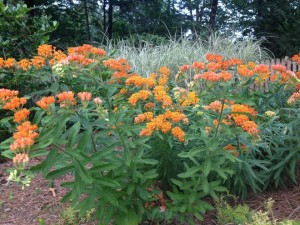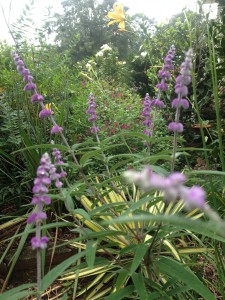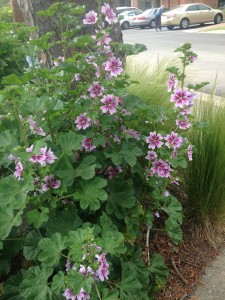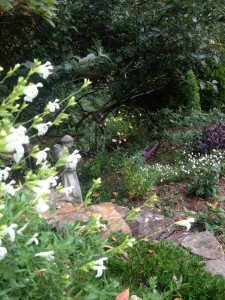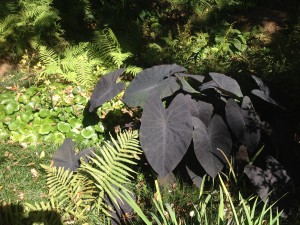This summer’s “Better Late Than Never” pollinator garden is coming along and, as in years past, will get even more colorful as the end of summer approaches. I’m happy to see that private and public gardens and gardening for wildlife is a growing trend across the country.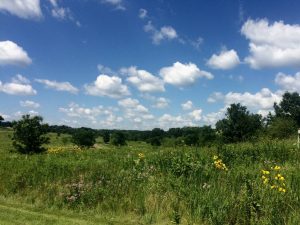
I recently returned from a trip back to my home state of Wisconsin, where I visited a couple of county parks my late father helped make possible many years ago near the beginning of this movement in public gardening. My mother, sister, and I are certain he’d have been very pleased with the progress of this prairie reclamation in the middle of southern Wisconsin farm land.
 At Dorothy Carnes County Park & Rose Lake State Natural Area we watched as dozens and dozens of purple martins flew back and forth to houses set up for them, butterflies soared through prairie plantings, and a group of special needs children returned from a morning hike.
At Dorothy Carnes County Park & Rose Lake State Natural Area we watched as dozens and dozens of purple martins flew back and forth to houses set up for them, butterflies soared through prairie plantings, and a group of special needs children returned from a morning hike.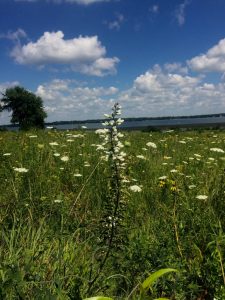
The next day we visited Korth County Park on Rock Lake and hiked down to a bench overlooking the water. Visitors can hike or bike along paths skirting the lake, and both parks have shelters used for picnicking. I feel so lucky to have visited these lovely and well maintained public spaces.
Our pollinator garden is tiny in comparison but there’s so much life in it too. This year I had trouble finding the peach porterweed that the butterflies adore, but a few weeks ago noticed that a number of them had reseeded from the previous summer’s garden. These volunteer surprises make this garden extra special.
Other “volunteers” this year are red gomphrena, rudbeckias with huge blooms, many zinnias, celosia, sunflowers, cosmos, hyacinth bean and moonflower vines on the arbor, cleome where the compost bin had been, and a lone dill plant. It’s truly an old fashioned cottage garden for the pollinators and the enjoyment of anyone who stops to look!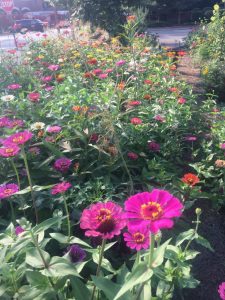
We also added a few new plants this year. Verbena ‘Lollipop’ and pentas for butterflies, cigar plant, pineapple and Mexican sage for hummingbirds, African blue basil and purslane for the honeybees, and red ruellia too.
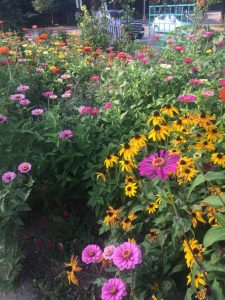 The Mexican sunflowers, tithonia, are also slowly getting larger and will add their bright orange blooms that the butterflies love as the summer wanes. The annual milkweed is in bloom now too.
The Mexican sunflowers, tithonia, are also slowly getting larger and will add their bright orange blooms that the butterflies love as the summer wanes. The annual milkweed is in bloom now too.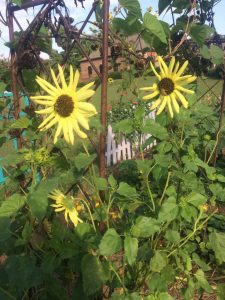
Perennials that return are always welcome in the garden! The butterfly weed, purple coneflower, and salvia greggii are old friends.
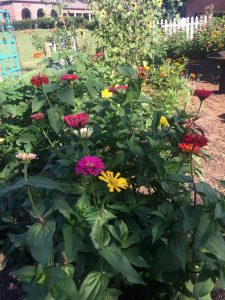 A woman approached me the other day as I was watering to say thank you and said she’s created a pollinator garden of her own after following the progress of this small space in the middle of Crestline Village.
A woman approached me the other day as I was watering to say thank you and said she’s created a pollinator garden of her own after following the progress of this small space in the middle of Crestline Village.
Talking with her and others has been so gratifying. I hope my Dad is watching from wherever he is and smiling at our efforts to create a beautiful space for community and nature too. If you’re in Crestline Village, I hope you’ll take time to stop and appreciate this little slice of pollinator heaven!
If you follow us on Instagram or Facebook you’ve probably seen a new series of shop videos – if not, follow us and check them out! They’re also on our YouTube channel under Oak Street Garden Shop – if you’d like to see more, subscribe!
By Kris Blevons

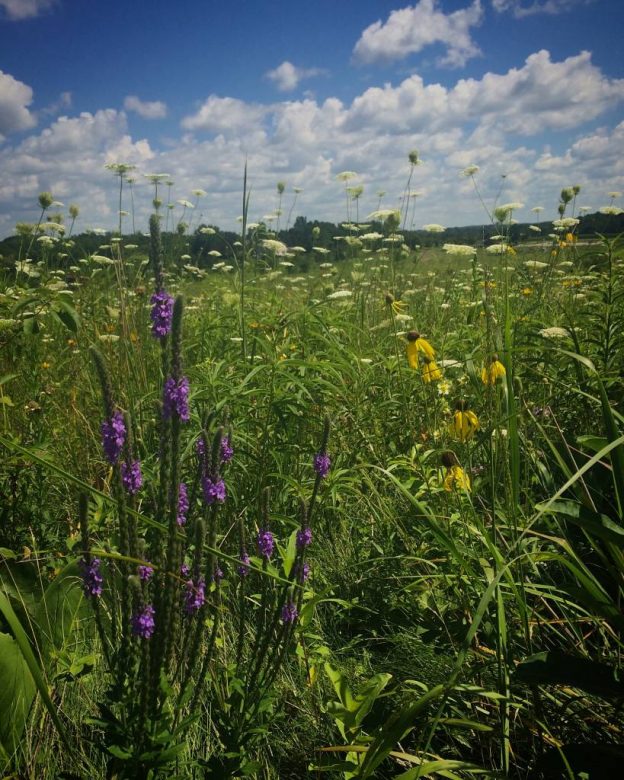
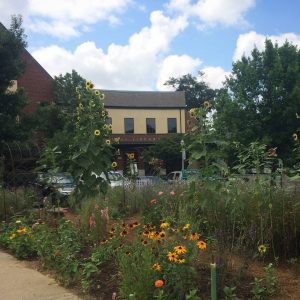
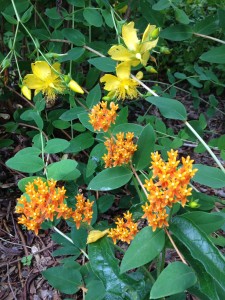 Butterfly weed, Asclepias tuberosa, is the pretty orange flower, shown in the picture on the right in my very hot and sunny front border. It’s right at home with other butterfly attractors including salvias, trailing white lantana, purple and red gomphrena, zinnias, mexican heather, other
Butterfly weed, Asclepias tuberosa, is the pretty orange flower, shown in the picture on the right in my very hot and sunny front border. It’s right at home with other butterfly attractors including salvias, trailing white lantana, purple and red gomphrena, zinnias, mexican heather, other 